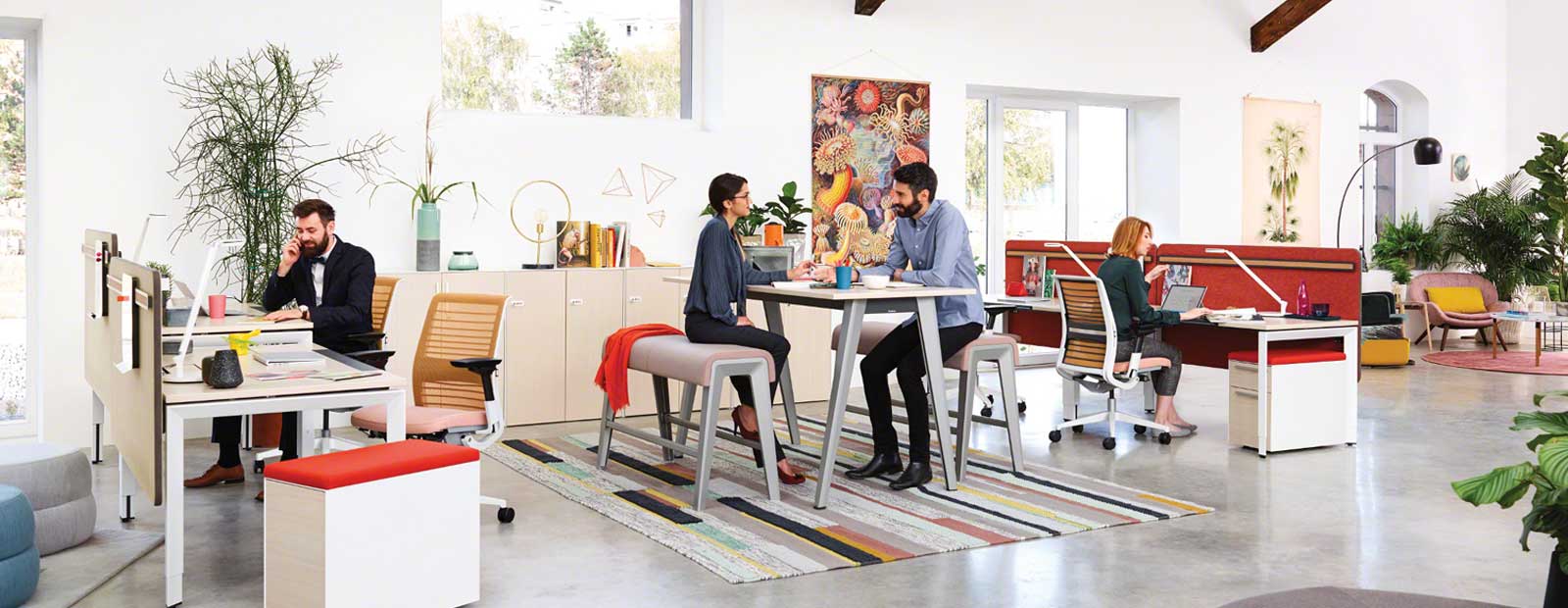Around the topics of office design and the future of commercial interiors, there is a whole raft of talk about what millennials want in a workplace and how to attract the younger generations. Research suggests that the workforce of today is getting older and older though so is it time to start shifting the focus?
The modern workforce is maturing
The World Economic Forum (WEF) found that life expectancy of people being born now is 100 years old. People are living (much) longer, which means they need to work (much) longer in order to try and achieve financial stability. In fact, WEF also predicts that there will be a fourfold rise in employees aged 65 and over by 2050 and the age of retirement will extend beyond 70.

Supporting these findings is the Office of National Statistics which revealed that, in the last decade, the number of employees aged 70 and over has more than doubled. The ONS also reported that in the UK, there are 53,000 people aged 80 or over still in the workplace, with 25% still working full time hours.
As the age span of the modern workforce continues to extend, it therefore becomes increasingly important that businesses are doing all they can to accommodate and support the diversity. Of course, this is all linked to creating an inclusive workplace which ensures anybody and everybody can be productive and comfortable.
An amalgamation of attitudes and behaviours
Anne Willmot, who is the Age Campaign Director at Business in the Community is encouraging business owners to act fast and take action now because by 2022 there will be 800,000 more older employees in the workplace.

So, while it’s important to look ahead and future-proof your workplace to attract and retain new talent, it’s also vital that you’re fostering an environment which is simultaneously inclusive of older generations.
The obvious difference is technology. Older generations grew up without things like smart phones and virtual assistants – some even without the internet. However, it’s also essential that you are sensitive to the physical changes which come as a result of aging that are easily overlooked. These include things like mobility struggles, problems with eye sight, issues with hearing and the regulation of things like body temperature and fatigue.

Work Design Magazine summarise this generational divide perfectly when they said: “Paired with their fast-paced and on-demand mindset, younger generations look for more freedom and variety in their workspace, while Baby Boomers may feel more comfortable with familiarity and routine.”
Facilitating the different age generations
Our advice? A strategic combination of space design, furniture, technology and company culture.
Workspace design and the physical environment
In terms of office design, workplace fit out, furniture and resource, our experts recommend creating an ecosystem of neighbourhoods and microenvironments which cover a range of different bases. This involves dividing the space up into different settings which provide different purposes, from high-energy collaboration spaces to quiet, enclosed zones where employees can find privacy and solitary focus.

We would also recommend:
- A combination of flexible working spaces (such as hot desking clusters) for those who prefer to work in a more agile way, and fixed workstations for traditionalists who feel more comfortable with conventional space ownership.
- Informal settings and purpose-built social spaces which encourage cross-communication and relationship-building across the board.
- Work settings which facilitate both digital and analogue creativity so that those employees who are accustomed to being constantly connected to technology can operate but those who aren’t so tech-savvy can flourish in their own way too.
- Adequate training facilities for acquiring new skills or transferring existing skills which need passing down through the generations.
- Acoustic solutions and private spaces where staff can go to avoid noise or interruption.
- A consideration for indoor air quality and providing plenty of natural light sources.
- Multi-height surfaces, plenty of soft seating and touchdown furniture to support ease of movement around the space.
Company culture and wellbeing
It’s worth remembering that even if you have a well-designed workspace and the best commercial furniture, they won’t serve their full purpose without the right culture to match. Managing a multigenerational workplace requires a fresh approach to processes and teamwork – both of which are rooted in the culture and attitudes stemming from the top.
This includes factor such as:
- Flexibility and work-life balance
- Connection to company culture, values and brand messages
- Measures taken to improve mental wellbeing
- Mentorship to bridge generational gaps as part of the changing face of teamwork

So, to conclude…
Catering for a multigenerational workplace is about strategically combining a well-designed physical environment and bolstering this with an inclusive company culture.
For example:
We recently carried out a survey of UK office workers as part of our Inclusive Workplaces: The Future of Office Design report and found that nearly a quarter (24%) say their workplace is lacking in training in new technologies which would help them feel more included.
This could be successfully addressed with a more inclusive approach to employee experience – as opposed to a blanket approach – and the provision of sufficient training in a well-equipped working environment.
You can download our full report below

